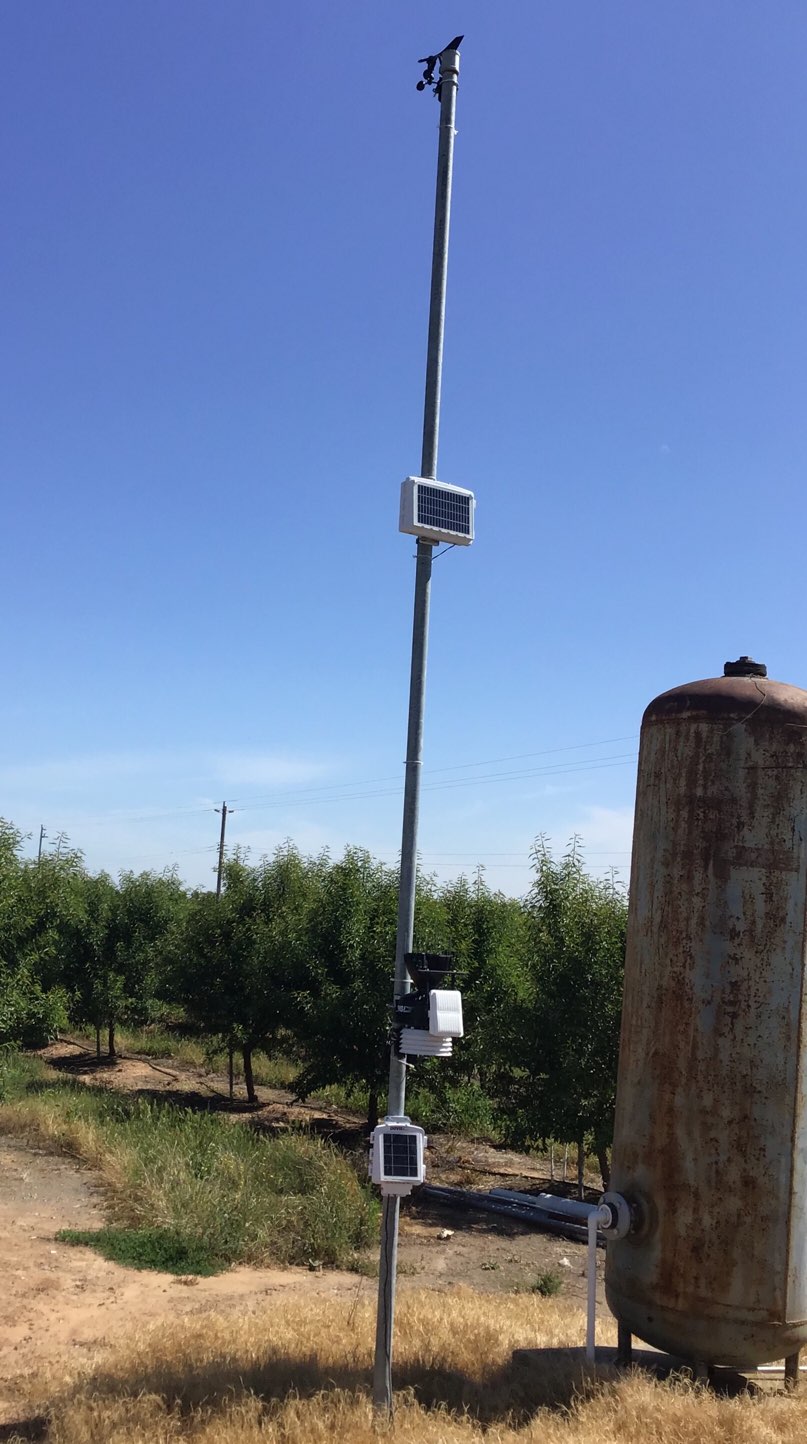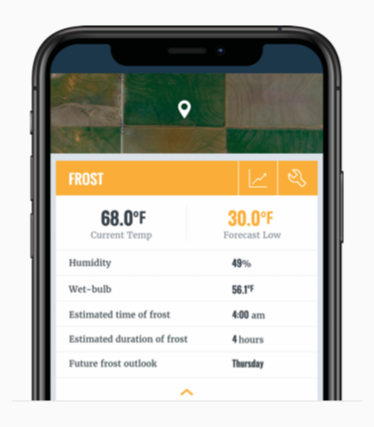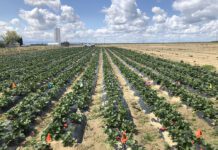
Cold temperatures usher in the dormant season, giving trees and growers a much-needed respite from the intensity of the summer months. The transition to dormancy and lack of visible activity within the orchard can belie the important processes that occur during this time. Just as growers are preparing for the start of another season with winter sanitation, pruning, fumigation and planting, the trees are also setting up for their next crop even during their physiological rest. Weather during this phase of the tree’s life cycle plays a crucial role.
In fact, weather plays an important role at every stage of crop production, and farmers have understood this since the first seed was hand-planted thousands of years ago. Try to imagine one decision you make in the orchard that is not influenced to some degree by weather. Wind speed or temperature inversions often limit herbicide applications. Maximum temperature affects foliar sprays and how long field crews can work safely. Spring rains may delay the first irrigation, while frost conditions warrant turning the pumps on.
The question is not if weather data is critical for decisions, but if your weather data is accurate and usable enough to make the right decisions. Increasing the accuracy and usability of weather data in the field will help you better monitor and respond to these powerful forces of nature that are outside of our control. With shifting climate patterns observed over the last few years, the value of accurate weather data only increases as a management tool.
Defining Accuracy
Accuracy in this context does not mean purchasing the most expensive weather station on the market or measuring down to the hundredth of a degree in temperature. It means investing in suitable equipment for a location that is representative of the actual conditions in your field or fields.
Weather data is generally abundant and easy to access. There are dozens of weather apps available for your phone, forecasts and current conditions are reviewed periodically on the radio, and public sources like the California Irrigation Management Information System (CIMIS) and Weather Underground can be accessed online. The CIMIS network has 145 weather stations located throughout the state. However, does the weather from these public stations reflect the conditions in your field?
For some, the answer may be yes. The level of accuracy needed depends on the purpose of the weather data. If your primary need is to anticipate spring frost events and start irrigation systems, the forecasted temperatures are probably sufficient to start the pumps so you can cover the acres you need to get across. This is especially true if you have been farming the field for years and know it only varies a few degrees from the local weather station. For other decisions, though, the distance from the public station, local topography or other climate factors may result in enough variance to warrant an in-field solution.
Proving the Value
Nathan Stewart, independent crop consultant and President at AgVantage Consulting Inc., has seen the value of in-field weather data. Initially focusing on clients’ fields that were located the furthest from public weather stations, Stewart and his growers have benefited from an expanding network of stations.
“For some weather stations, we have noticed a significant difference with the closest public station, and in terms of pest phenology models, seen a 10-day difference in treatment timing,” Stewart said. “That is the difference between an insecticide treatment working or not working.”
An ominous reality facing the industry is the steady phase-out of many broad spectrum and long-residual pesticides. Newer selective products target pests at a particular stage in their life cycle, and missing that precise treatment timing can result in a failure to control the pest, leading to crop damage. Just as it would be unwise to rely on a navel orangeworm trap 10 miles away to monitor your pest population, so might tracking your degree days from a weather station 10 miles away.
“My analogy is like trying to shoot a sniper rifle without a scope,” Stewart said. “If you are going to use very precise products, why aren’t you using more precise weather data?”
This does not mean that growers and crop consultants should ignore weather data from surrounding areas. Regional weather conditions can help confirm the local readings, and historical data can train us to respond to weather patterns we have encountered in the past. Stewart notes that, “The biggest value that weather stations add to growers is not today’s weather, but it’s the historical data.” The big challenge then becomes how to process all of that data, identify the patterns and respond in a timely manner. If you want to realize all the value local weather can bring, from frost protection, to pest management, chill portion tracking and irrigation scheduling, you will need to find a system that can process the weather data for you and extract meaningful insights or send alerts when a threshold is passed.
Practical Considerations
Companies that provide weather hardware and software are focused on overcoming these and other challenges common to on-site weather stations. In terms of accessibility, weather data can feed directly into growing degree-day, pest phenology and irrigation scheduling models which display in web or mobile apps for convenient access. Some will allow you to set temperature thresholds for alerts. Many stations send data to a centralized cellular gateway, which can also integrate soil moisture sensor feeds. When deciding on a particular system, consider how you will view your weather data, if you can share it with others who need access and if you already have a gateway that weather sensors can utilize.
Another important consideration is the installation and maintenance of sensors, which is critical to their performance. Kaylan Pollard, Agricultural Sales Manager at Davis Instruments Corporation, cites several considerations that go into installing and maintaining weather sensors.
“It is important to install your main sensor suite located in an area that is easy to maintain,” she said.
For example, rain gauges can be installed above or outside of the orchard canopy, since litter like falling bloom and leaves can fill up the gauge and give inaccurate readings. Bird droppings and dust must also be cleaned from solar panels periodically. Other sensors like temperature and humidity should be located within the orchard to accurately read conditions inside the canopy.
If installing weather sensors seems daunting, you have options for assistance. For the moderately tech-savvy user, Pollard describes, “With Davis’ EnviroMonitor configuration app, the hardware will come to you and walk you step-by-step through setup, configuration, adding sensors and monitoring system health.”
For others who need additional help, there are service providers who can do a complete install and include regular system maintenance in the service package.
Forecasting the Future
Regardless of your views on the causes of climate change, climate patterns do change, and they can have major impacts on crops. Whether it is late spring rains, summer smoke and high humidity, or extended fall heat, each pattern can promote issues that need to be addressed. Furthermore, expanding regulatory efforts that reduce nutrient, irrigation and pesticide inputs will force us to become more precise with our applications in order to maintain productivity. Local, accurate weather data may be one of the most important tools we can start using today in order to prepare for a stormy future.
















